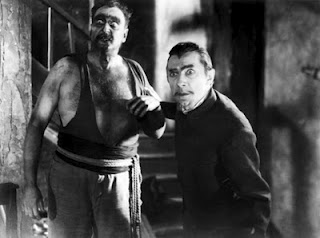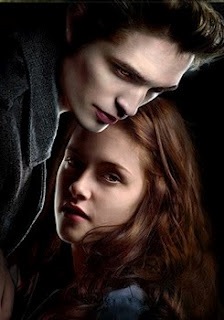In my last article, I tried to rescue science-fantasy from the dumpster of “soft” sci-fi and restore it to its rightful place as an equal but contrasting genre with its roots in traditional folklore. But this “science-as-magic” approach to storytelling is not confined to modern space operas.
Evil spirits, monsters, ghosts, the undead, fatal curses, mysterious powers… Of all genres, horror has the clearest links to the folklore and fairytales of the past and still relies heavily on supernatural tropes to drive its stories. And yet, just as with science-fantasy, the genre has been undergoing a secular revolution in the last handful of decades.
 |
| Bela Lugosi (and friend) in 1932’s “White Zombie” |
Take zombies, for example. Throughout the first half of the 20th Century they stuck pretty closely to their Voodoo origins. A powerful, charismatic but ultimately malevolent figure uses black magic to raise a workforce of mindless slaves (sometimes living drones, sometimes re-animated corpses) in an attempt to further his power over society. At the same time, he usually pursues a beautiful and virtuous young woman who resists his advances until she too succumbs to the zombie curse and has to be rescued (or dispatched) by the heroes.
In such scenarios, the zombies are little more than a psychological threat while the true danger is posed by the zombie master himself (it’s always a man – has there ever been a zombie mistress?) whose role is to remind us that even the strongest will and most upright morals can be undermined and usurped. (Not unlike the character of Dracula. Is it a coincidence that Bella Lugosi was cast in 1933’s White Zombie?)
Fast forward to 1966 and George A. Romero’s Night of the Living Dead. Romero’s zombies serve no master. There is no moral conundrum at work, no satanic rites to overcome. They are just dead flesh, without reason or purpose and, through them, Romero presents us with a simple fear – that Darwin was right.
What if we’re nothing more than the meaningless output of evolution; intelligent meat puppets driven by base instincts that we conceal behind a facade of conscience? The zombies are a mirror in which our moral pretentions are stripped away and we see ourselves for what we’re afraid we really are.
With this in mind, it’s clear that the importance of the brain in modern zombie fiction is no accident. Without it, the zombie is just another corpse. Neural activity becomes the measure of humanity. The mind replaces the soul.
Another significant change is the fact that almost all post-Romero zombies are created by science, rather than magic. This follows in the tradition of science-fantasy, replacing the classical supernatural conventions of storytelling with pseudo-scientific theories that fulfil the same role and everything from cosmic radiation to ultrasonic farming equipment has been used as an excuse for the shuffling, cannibalistic hordes.
You don’t have to be a physicist to realise that most of these explanations make less sense than the magic they’ve replaced. At least the zombie master’s powers were supposed to be shrouded in mystery – science, by contrast, purports to move us all towards enlightenment.
The truth is that, as far as most of us are concerned, science might as well be mystical. It’s administered behind closed doors, in terms we can’t grasp, by society’s new elect. Robes have been replaced with lab coats, mitres with microscopes. Is the place of scientists in our culture really so different from that occupied by the Druids, two millennia ago?
 |
| The face of the modern vampire – Twilight |
There’s more to horror than zombies though and the traditional monsters are still with us. There will always be an appetite for vampires, werewolves, demons and the like and they’ve survived with most of their supernatural trappings intact. But how the mighty have fallen. Instead of occupying the dark, chilling heart of the genre as they once did, they have made a sideways shift into that curious sub-genre; Paranormal Romance.
Creatures that once represented the darkest leanings of human nature now fulfil a series of romantic fantasies. Could it be that vampires and werewolves are now considered too woolly for mainstream horror fans? Are explorations of spirituality and redemption only palatable (or marketable) to an audience of teenage girls and their mothers?
I don’t know, but I remain optimistic. After all, one of the greatest horror novels in history, Mary Shelley’s Frankenstein, uses a foundation of pseudo-science (the creation of the Creature) to address fundamental questions of mortality, identity and love while still being compelling and scary to boot.
One thing is certain – as science continues to progress, our dependence on and suspicion of it, will progress as well. It’s only natural that the genre through which we express our deepest fears should already be riddled with it. (I don’t have space to discuss the “Atomic Horror” of the 1950s and 60s – everything from the giant ants of Them! to the disfigured scientist of The Fly).
Perhaps those fears are misplaced but, at least as far as the zombies are concerned, science is – quite literally – the new Voodoo.
